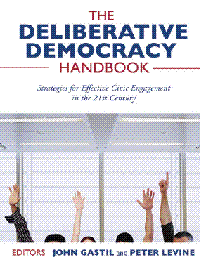In 1928, Karl Mannheim argued that people tend to form stable civic identities in their late teens. As adolescents emerge from the relatively narrow horizons of their families and neighborhoods, they confront the broader world of governments, ideologies, parties, and nation-states. They must adopt some stance toward this world, whether it is passive acceptance, alienation, enthusiastic embrace, or personal obligation. After people form a stance, the effort required to change their minds is too costly unless major historical events intervene and require a reassessment. Given the relatively low salience of public life, inertia tends to dominate for the rest of our lives.
If Mannheim was even partly right, then it is important to ask how our institutions socialize young people for lifetimes of civic and political participation. The impact of these institutions is likely to change as their structure and behavior evolve. Thus a study of institutional change is crucial for our analysis of political development.
I suspect that the following are some of the most significant ways in which American institutions have changed their effects on political socialization over the past 25 years:
Electoral politics: Thanks to sophisticated gerrymandering, there is ever less competition for state legislatures and the US House. As a result, young people grow up without the experience of debate in their communities and may conclude that controversy is unnecessary or artificial, something that Washington political elites stir up for tactical reasons. The lack of competition also means that elected officials are relatively insulated from accountability and relatively uninterested in seeking young people?s support. We know from field experiments that young people often vote when asked. The decline in political competitiveness means that they are less likely to receive a request to vote.
Meanwhile, sophisticated marketing strategies and technologies have allowed consultant-driven campaigns to focus their efforts on groups of people with known voting histories. Young people have unknown voting preferences and are relatively unlikely to participate. Thus they are usually left off target lists. To make matters worse, their services as volunteers are not needed as much as in the past, because campaigns depend on expert consultants, mailing lists, and professionally produced advertising.
Civil society: As Elinor Ostrom notes, ?Some aspects of the science of association are both counterintuitive and counterintentional, and thus must be taught to each generation as part of the culture of a democratic citizenry.? Associations have incentives to recruit young people and teach them skills necessary for the organizations? maintenance. If associations recruit fewer members, that is bad for political socialization. Unfortunately, some important organizations that once recruited young people have lost membership. The most obvious examples are labor unions. In 2000, just 13% of 15-24s were union members, far less than fifty years ago. Religious congregations can also teach civic skills. But regular religious attendance among high school seniors declined from 41 percent in 1976 to 33 percent in 2000. During this period, high school seniors did not show any major change in attitudes toward religion, but they became considerably less likely to participate in organized religious groups.
The news media: The modern mass media are fragmented and allow people to opt out of news more easily than in the past. There also may be more sorting by level of knowledge; some newspapers provide highly sophisticated information to global audiences via the Internet, while other news sources (such as commercial web portals and music radio stations) provide extremely superficial coverage tilted toward entertainment. Organs that might serve diverse audiences, such as metropolitan daily newspapers, are endangered in the current market. Meanwhile, most people feel that news programs have become less civil, perhaps because they must compete more avidly for ratings. Diana Mutz and Byron Reeves have found that people are entertained by angry debates, yet such confrontations reduce trust in government and politics.
There is a problem with youth civic engagement, but it’s important not to locate the problem inside young people’s heads if the real cause of their alienation lies in institutions.
 John Gastil and I are busy organizing the production of our co-edited volume, The Handbook of Public Deliberation: Strategies for Effective Civic Engagement in the 21st Century. Jossey Bass will publish it this summer. Of the 19 chapters, 16 describe very concrete and practical approaches to public deliberation; thus the book will offer a diverse menu of choices for civic groups, governments, school systems, and others to use. (The three remaining chapters are overviews of the field.) Since almost all chapters have been written by teams, usually comprised of both scholars and practitioners, there are 44 authors in all. Coordinating everyone’s participation has been quite a job for John and me. However, we’ll reach a milestone tomorrow when we submit a fully edited and complete manuscript.
John Gastil and I are busy organizing the production of our co-edited volume, The Handbook of Public Deliberation: Strategies for Effective Civic Engagement in the 21st Century. Jossey Bass will publish it this summer. Of the 19 chapters, 16 describe very concrete and practical approaches to public deliberation; thus the book will offer a diverse menu of choices for civic groups, governments, school systems, and others to use. (The three remaining chapters are overviews of the field.) Since almost all chapters have been written by teams, usually comprised of both scholars and practitioners, there are 44 authors in all. Coordinating everyone’s participation has been quite a job for John and me. However, we’ll reach a milestone tomorrow when we submit a fully edited and complete manuscript.